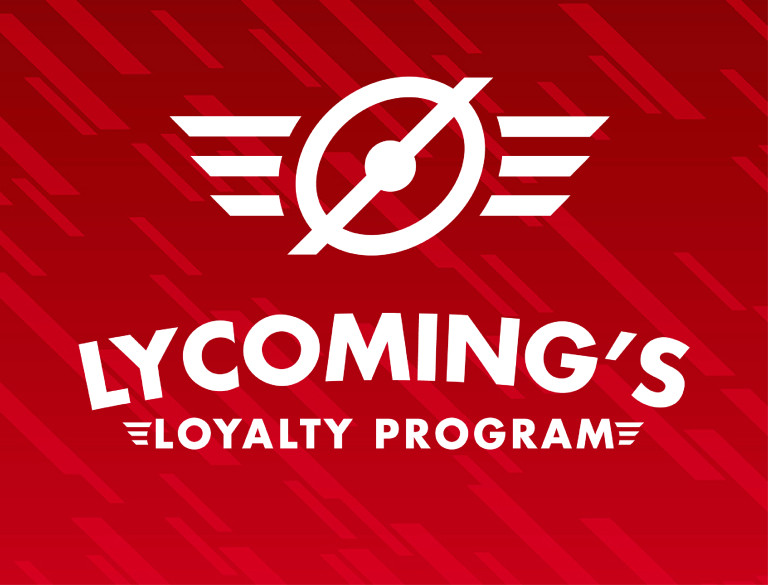Tips From the Hangar
These are some of the more common questions asked at our service hanger:
QUESTION: Do your new, rebuilt or overhauled engines require a break-in period that consists of cruise at low-power settings?
ANSWER: Definitely not. Fly them as you would a high-time engine. In fact, so-called “slow” flying may have harmful effects. The rings may not seat properly resulting in higher than normal oil consumption.
QUESTION: At what rate of oil consumption does continued operation of the engine become a hazard?
ANSWER: Generally speaking, when the oil consumption reaches one quart per hour, corrective action should be taken. However, maximum permissible for each particular engine is listed in the engine operator’s manual.
QUESTION: What are the dangers of operating an engine with high oil consumption?
ANSWER: When excessive amounts of oil get past the rings, there is the danger of the ring sticking or breaking with a dramatic rise in oil consumption. Then oil soaked carbon forms at a fast rate. At the same time, the presence of oil in the combustion chamber has the effect of lowering the octane rating of the fuel. Operating temperatures go up. We have now set up conditions inviting detonation and/or preignition.
QUESTION: If I can’t get aviation fuel, may I use automotive fuel if octane rating is equal or higher?
ANSWER: No. As an engine manufacturer, even the use of automotive fuel where an STC has been issued is considered risky and is not recommended. There are 4 or 5 good reasons and all are important. They can be summed up in three words – potential engine failure.
QUESTION: What is the most common cause of premature engine wear?
ANSWER: Dirt in the air entering the engine through the carburetor or injector due to a worn-out air filter, torn induction hoses or broken air boxes, and then being carried through the engine by the oil.
QUESTION: Does the spacer between the propeller and the engine serve any purpose other than streamlining the nacelle?
ANSWER: Yes. In many cases, moving the propeller forward, which increases the clearance between propeller and cowl, increases propeller efficiency and reduces nacelle vibration.
QUESTION: In some cases, we note a minor discrepancy between the engine operator’s manual and the airplane Pilot’s Operating Handbook. Which one should be followed?
ANSWER: The airframe Pilot’s Operating Handbook. For various reasons, after the engine is installed in the airframe, operational techniques may be altered or certain restrictions may be placed on the engine. A simple example would be a placard restricting continuous operation in a certain RPM range.
QUESTION: I fly an aircraft equipped with a fixed-pitch propeller. During cruise, I’m told to keep increasing the RPM as my cruising altitude is increased. Since I fly pretty high, in order to hold 65% power, I find the RPM is mostly at 2550 to 2600. Won’t this high RPM reduce the engine life?
ANSWER: No. The higher RPM won’t harm the engine or reduce service life. Remember, you are increasing the RPM only to hold the same power you had at a lower altitude at say, 2350 RPM.
QUESTION: Is there really any difference between good automotive oil and aviation oil?
ANSWER: Yes, indeed there is! Don’t ever use automotive oil in your aircraft engine. These oils are now blended for use with unleaded fuels, and the additives in auto oil cause problems in an aircraft engine that operates at much higher temperatures than the automobile engine. We have encountered engines with holes burned in pistons due to the use of automotive oils that have an ash deposit causing preignition. It seems awfully hard to convince people who have had great success with the oil used in their car that it may not be used in their aircraft engine.
NOTE: Since we have had several questions on fuels and oils, it might be well to mention that we can’t think of a quicker way to void your engine warranty than by using anything other than the recommended and FAA-approved aviation fuels and oils.
QUESTION: What are some common causes of excessive oil consumption other than the burning of oil due to high engine time?
ANSWER: Building up of crankcase pressure due to “blow-by” caused by ring wear may result in oil being blown out of the breather. The same thing can result from broken piston rings. Oil may be pumped overboard due to a faulty vacuum pump or faulty automotive type fuel pump.
QUESTION: My dealer advised me to use straight mineral oil in my new engine until it’s “broken in.” How do I know when it’s “broken in”?
ANSWER: When oil consumption has stabilized. Example: After continued checking of oil consumption, you have determined the engine is consistently using one quart in a known number of hours. This period should not exceed 50 hours of operation.
QUESTION: I have problems with lead fouling of spark plugs. What can I, as a pilot, do about it?
ANSWER: Several things. See that you have the correct spark plugs that are recommended by the engine manufacturer’s charts, not oddballs recommended by some well-meaning friend. Avoid prolonged idling on the ground. Avoid power-off descents. Lean out at cruise and even on short cross-country flights. Rotate plugs from bottom to top every 50 hours – or 25 hours if necessary.
Find a Service Center
Seek answers to your questions from our network of authorized service centers.
